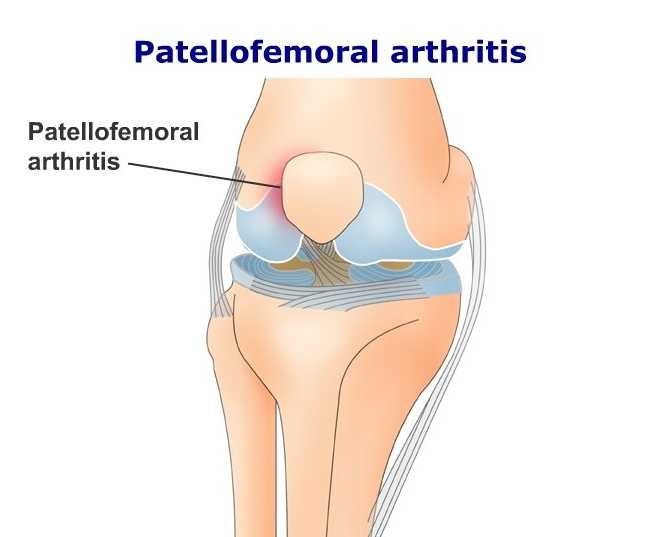Do you require any assistance? Simply reserve your appointment online below
Patellafemoral arthritis
Restoring movement and function
Patellofemoral arthritis
Arthritis of the patella refers to the presence of degenerative changes underside of the patella (kneecap) and the channel-like groove in the femur (thighbone) that the patella rests in. It causes pain in the front of your knee and can make it difficult to kneel, squat, and climb and descend.
Patellofemoral arthritis usually affects patients who have patellofemoral laxity, subluxation, malalignment, and a high-riding patella, as well as the same patient population affected by arthritis of other joints.
Increasing age, obesity, overuse, chronic joint instability, prior interarticular fractures, and systemic inflammatory conditions are risk factors for the development of arthritis in the hip, knee, patella, and other weight-bearing joints. Patellofemoral arthritis can also occur in younger patients as a result of malalignment or trauma.

Symptoms of Patellafemoral Arthritis

The main symptoms of patellofemoral pain syndrome are:
Pain
You may feel pain in the front of your knee and around and behind your kneecap. It can sometimes be quite severe and everyday movements like walking up and down stairs can make it worse. You may also feel a dull ache, for example after you’ve been sitting for a long time. The pain often makes it difficult to kneel or squat. It’s often aggravated by running, so it frequently occurs during or after you’ve played sport.Crepitus
Changes in the surface of your cartilage can cause a scratching or grating sensation from the kneecap, which you may be able to hear when you bend or straighten your knee. Crepitus doesn’t often cause pain.
Causes of patellofemoral arthritis
Dysplasia.
Dysplasia occurs when the patella does not fit properly in the trochlear groove of the femur. Because of this, when the knee moves, there are increased stresses on the cartilage. This begins to wear the cartilage down..
Kneecap Fracture.
Patellar (kneecap) fractures often damage the articular cartilage that covers and protects the underside of the bone. Even though the broken bone heals, the joint surface may no longer be smooth. There is friction when the patella moves against the joint surface of the femur. Over time, this can lead to arthritis..
Diagnosing Patellafemoral arthritis
Patellofemoral arthritis is diagnosed when there is significant loss of cartilage from the joint surface of the patella and the trochlea (groove).
The diagnosis is restricted to arthritis seen only in this compartment of the knee; if the medial and lateral compartments are affected, generalized osteoarthritis of the knee is the likely diagnosis. (As with other disorders of the patellofemoral joint, it is more frequently seen in women)
People who develop patellofemoral arthritis generally receive one of three diagnoses:
- Post-instability arthritis: the result of cartilage damage that occurs with multiple dislocations or subluxations in the joint
- Post-traumatic arthritis: cartilage damage that results from a fall or other traumatic injury to the knee that then progresses over time to arthritis, or
- Overload osteoarthritis: a condition that resembles osteoarthritis in any other joint, i.e., a gradually progressive thinning of the cartilage related to “normal wear and tear” that in this case is restricted to, or starts in, the patellofemoral compartment of the knee.

You are in Great Hands
Treatment of Patellafemoral Arthritis

Weight loss. If you are overweight, losing just a few pounds can make a big difference in the amount of stress you place on your knee.
Physical therapy. Specific exercises can improve range-of-motion in your knee. Exercises to strengthen the quadriceps muscles will help relieve pressure on the kneecap when you straighten your leg.
Cortisone (steroid) injections. Cortisone is a powerful anti-inflammatory medicine that can be injected directly into your knee.
Viscosupplementation. In this procedure, a substance is injected into the joint to improve the quality of the joint fluid.

